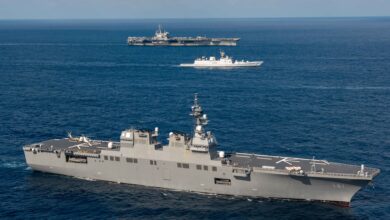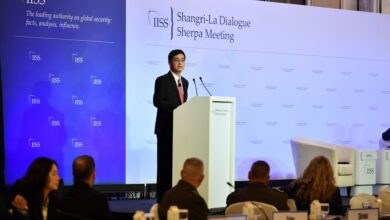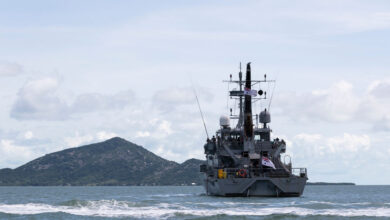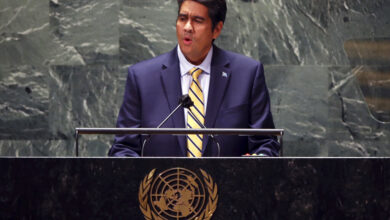Vietnam bolsters defenses in Spratlys, sending PRC a message

Tom Abke
By improving its defense facilities on the Spratly Islands and conducting a naval exercise nearby, Vietnam is sending a signal to the People’s Republic of China (PRC) that armed engagement between the two over their conflicting claims to the islands would come at a cost, analysts said.
The PRC has long been fortifying artificial islands within the Spratly chain that were designated as “maritime features” before Beijing ordered its military engineers to raise them above sea level through reclamation.
Vietnam’s Navy conducted combat-readiness drills with its 1,500-ton Quang Trung frigate in Spratly waters in early April 2021, the VnExpress online newspaper reported. Ka-28 anti-submarine helicopters also participated in the exercise with the Quang Trung, which is equipped with anti-ship and anti-aircraft missiles.
Hanoi’s enhanced fortifications in the South China Sea island chain in recent months include coastal defense installations, concrete pads and bunkers, administrative buildings and a large tower apparently for communications or signals intelligence, the Center for Strategic and International Studies’ Asia Maritime Transparency Initiative (AMTI) reported, with much of the expansion occurring on Sin Cowe Island and West Reef, pictured. Similar additions have appeared on other Vietnam-controlled parts of the Spratlys, such as Sand Cay, Central Reef and Spratly Island.
Vietnam’s national legislature declared in 2012 that it has sufficient evidence and a legal basis to assert sovereignty over the Spratlys, in accordance with the United Nations Convention on the Law of the Sea. In 2016, an international tribunal in The Hague, Netherlands, ruled as unlawful the PRC’s claims to an exclusive economic zone around its artificial features in a dispute with the Philippines, which also claims some of the Spratlys.
Vietnam’s presence on the Spratlys predates that of the PRC by many years, AMTI’s director, Greg Poling, told FORUM, and it has built fortifications on natural islands and reclaimed land extending from them. PRC fortifications, while larger, sit on entirely reclaimed land which constitute artificial features.
“Vietnam is focused mainly on making its islands more resilient, survivable and ensuring that it can give China a bloody nose if it comes to that,” Poling said. Keeping its installations supplied is key, therefore deeper harbors and channels for larger vessels have been added, along with helipads on all the islands so they can be resupplied by air to prevent the Chinese from starving them out in a conflict. Vietnam has built four aircraft hangars on Spratly Island and extended its runway for larger aircraft.
Hanoi’s naval drills and fortifications signal to Beijing that Vietnam is ready to defend its claims, Poling explained.
“The danger is I really don’t know how it is being received,” he said. “Beijing has been remarkably tone deaf to the signals being sent by its Southeast Asian neighbors and, as a result, what you have seen is time and again China is undertaking a degree of coerciveness and aggression in the South China Sea that undermines its broader strategy of influence in the region.”
Tom Abke is a FORUM contributor reporting from Singapore.
IMAGE CREDIT: ASIA MARITIME TRANSPARENCY INITIATIVE/MAXAR TECHNOLOGIES




